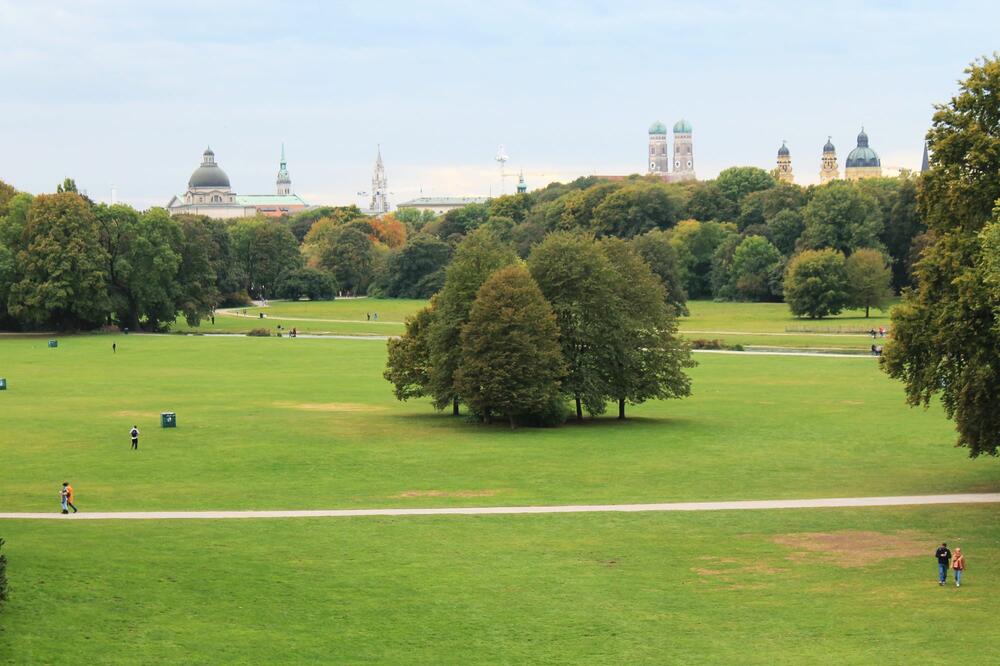Due to the nature of his work, Duško has not been able to take a vacation during the summer for decades, so I also stand in solidarity and wait for October to go on a real trip for a few days. We weighed various options for a long time, considered recommendations, until I suddenly interrupted: Let's go to Munich! Namely, Duško's cousin Ana has been living there for nine years. We've been planning to visit her for a long time, but never got around to going. Although there is a "low cost" line from Podgorica to Memmingen (the airport is about an hour away from Munich), at the time that suited us, the plane tickets were much cheaper from Tirana, so we decided to go there by car, park in near the airport and let's go on an adventure called "Munich". This was also our first meeting with Germany. We drove through Austria, the Czech Republic, Slovakia, but the road did not bring us to the soil of Germany until then.
As much as the airport in Memmingen surprised us with its modest dimensions and appearance in general, we were even more amazed by the number of parked cars in its vicinity. We even thought that it was not about the lots where used cars are sold, but no - these are all cars waiting for their owners to land back. A bus to Munich was waiting for us in front of the airport. Ana bought us the ticket online, so we just showed our phone and sat down. The bus left exactly on the minute. We didn't have enough time to admire one thing, and the next one would come along. The first impression of Germany could not have been more positive. Ana met us at the station and we took the Časka metro to the apartment. Since we came in the middle of the week and they were working, we were left to ourselves the next day. As I usually do, I did not prepare for the tour of Munich. I left it to the hosts to tell us what should not be missed in their city. In the evening, they spread a map of the city in front of us, circled what we should see, told us where to get in and out of the metro, which numbers and directions to follow... Everything was simple.
The next morning they saw us off and stuffed the umbrellas into our backpacks. It was very cloudy, and on two or three occasions our umbrellas were useless, but the weather did not hinder us from touring. We headed to the main square, Marienplatz, but we took a little detour and found ourselves at the place where the cattle market used to be. As a reminder of that, there are sculptures of cows in the square. On the tall church (St. Peter) that was in front of us, we saw the inscription "Panoramic view". It has a magnetic effect on me. The initial staircase was not for the claustrophobic. I would have given up if it hadn't expanded a bit soon. But you had to climb 14 floors. To God my soul... However, I did not repent. From above, we first saw Marijen trg and the Town Hall located on it. We were able to take in them with a glance. By camera, no. Around and around, near and far, we saw many towers. We definitely can't go around everything: we'll sort through.


On Marien Square, which dates back to the 12th century, a group of musicians played so well that quite a few interested people gathered around them, but the rain scattered us. Fortunately, it did not fall for long. The square is also home to the oldest fountain in Munich (Fischbrunnen), and the view of the Town Hall (Neues Rathaus), which we have already admired from a bird's eye view, is fascinating: you get lost in the details. By the way, it was built in the 19th century in the neo-Gothic style. We missed the moment when the clock from the cathedral (at 11, 12 and 17 o'clock) shows two significant events from Munich's history - the wedding of Duke Wilhelm V and Renata of Lorraine and the victory over the plague epidemic. We walked through the corridors of the City Hall, peering wherever we could. We decided to be the type of tourists who want to see as much as possible, at the expense of "immersing in the matter".

We headed towards the most famous cathedral in the city – the Frauenkirche Cathedral, which they say is the symbol of the city and that, while there were postcards, it was necessarily on those representing Munich. In front of it we saw a nice fountain. We entered the cathedral, but we didn't go up, even though they say it has the best view. We're done with the panoramic views for the day. The rain has completely stopped. The temperature was ideal for walking. We continued to the Odeon square (Odeonsplatz), then entered the nice park (Hofgarten) where Diana's temple is located and reached the Bavarian Government building. In front of it we saw a group of tourists on bicycles. I thought: What a wonderful idea!, and then I remembered our traffic jam. Nothing nothing…
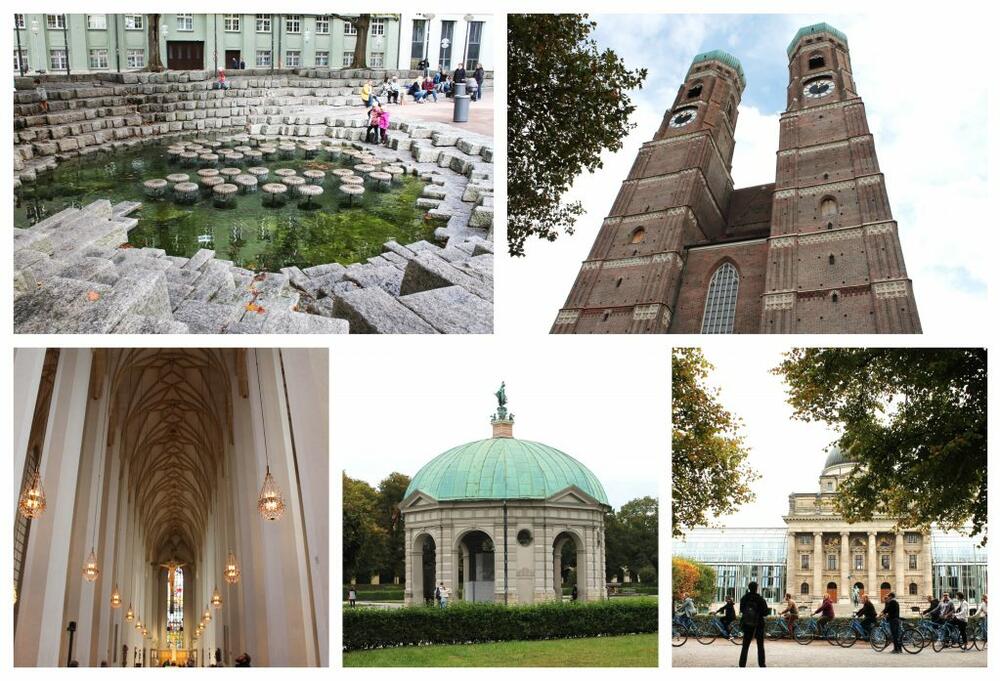
Following Ana and Robin's instructions from the previous evening, we headed towards the river Izar, whose branch, artificially made, flows almost through the very center. In a place called "The Wave", surfers try to tame the river with attempts and falls. The more experienced ones are a real attraction for the many tourists crowded on the bridge and on the sides on the shore. We stood, admired them, ran when someone fell, filmed, enjoyed... We almost lost track of time, and there was still so much planned ahead of us.

We extended a little forward. Wherever we moved there were interesting buildings worth stopping, photographing and visiting, but it would take us at least 15 days, and we intended to cram it all into two and a half days to leave a day for a trip outside of Munich. The choice of that location depended on the development of weather conditions, and forecasts were constantly changing. "Do we have time for this museum?". "Unfortunately no". Let's go to English Park!” Until then, we were passing through smaller parks (each of which is bigger than our biggest one), but this... I don't know what to compare my enthusiasm with. It is said to be one of the largest (even larger than Hyde Park in London and Central Park in New York) and most beautiful parks in the world. I thought that if the people of Munich only have this park, they should be very satisfied with their city. Everything was phenomenal, starting from the tree trunks, the paths, the buildings, the pubs. What delighted me the most was that every major park in Munich, and there are 5-6 really big ones, has an artificial lake. Ducks, geese, swans, fish live around it and in it... Me as a child in Disneyland. The English park was built at the end of the 18th century. Everything there enchanted me, again and again. We walked around the lake and finally found a pub next to the Chinese Tower to rest our legs and have something to eat and drink. On the way back, we also climbed a small hill where Monopteros is located, a building built in the 19th century in the Greek style. Although it is not very elevated, it offers an extraordinary view of the surroundings.
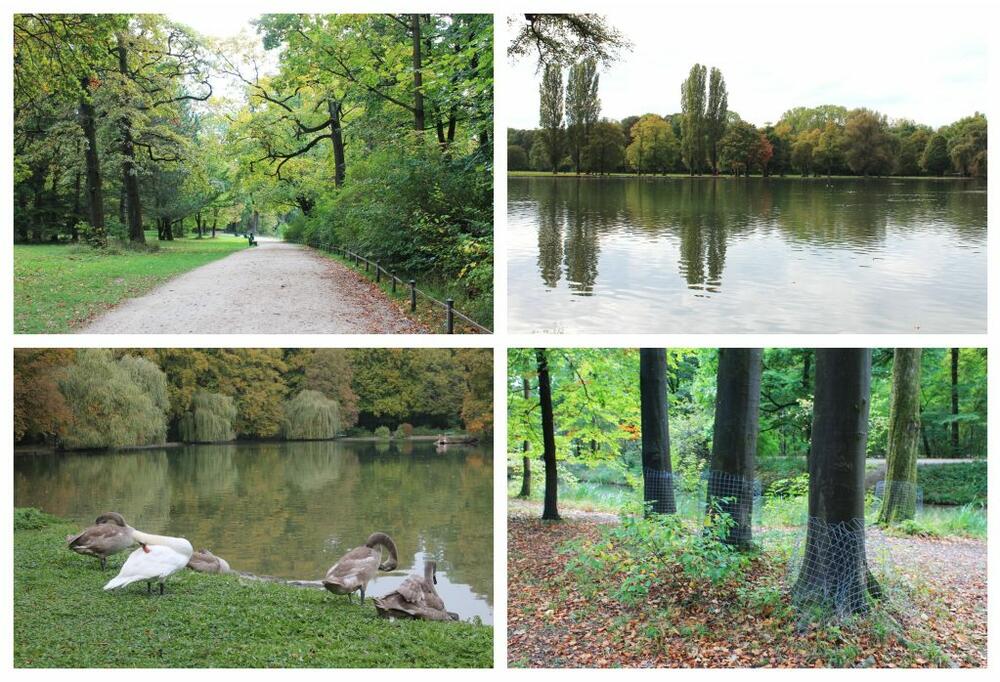

Our legs carried us further, everything according to Ana's plan and program. We also reached the neighborhood where universities, museums, and various interesting buildings were located. Dusk has already begun to descend. We were surprised by the snake sculpture until we saw that it was located next to the Faculty of Pharmacy. We passed behind the Victory Gate and realized we were looking at it from the wrong side, but as we continued forward we were too tired to turn back. It looks nice from this side as well. We'll see the lions some other time. We even ran into a flying saucer that was in front of the Pinakoteka. Our friend was shocked when he heard that we didn't visit a single castle or the Museum of Technology. "When?" There will be opportunities.
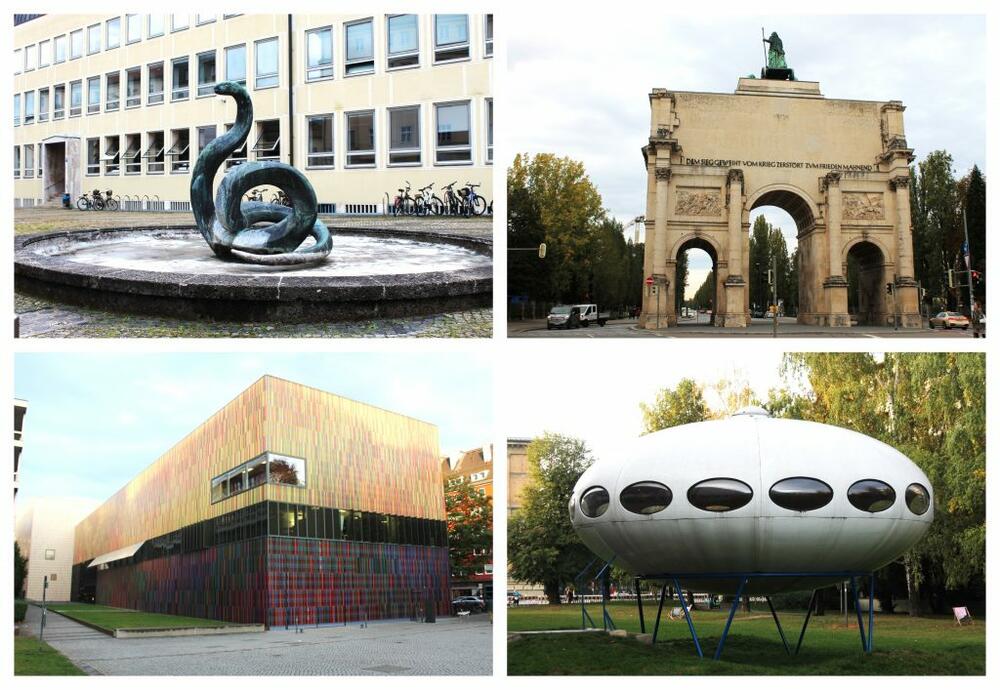
Although the parks left the biggest impression on me, I have to admit that Munich is also a city of squares, palaces, museums... Simply put, there are so many interesting things to see that you need to set aside a lot of time for them. Despite the twilight, we reached the King's Square (Königsplatz), which is surrounded by buildings made in the ancient style and which, at first, you find yourself taken aback. In front of us was a large building - a gate that, apart from looking Greek, also has a name in that style - Propylaea. On the right is the Glyptotheque (sculpture museum), and on the left is the State Museum of Antiquities. When we found out what was here, everything fell into place. On the way to the apartment, we passed by the famous Löwenbräu brewery. A huge copper cauldron in which beer is produced could be seen through the glass. Duško was extremely interested in going in and seeing that technology, but it was too late. We were too tired even for a beer hall.
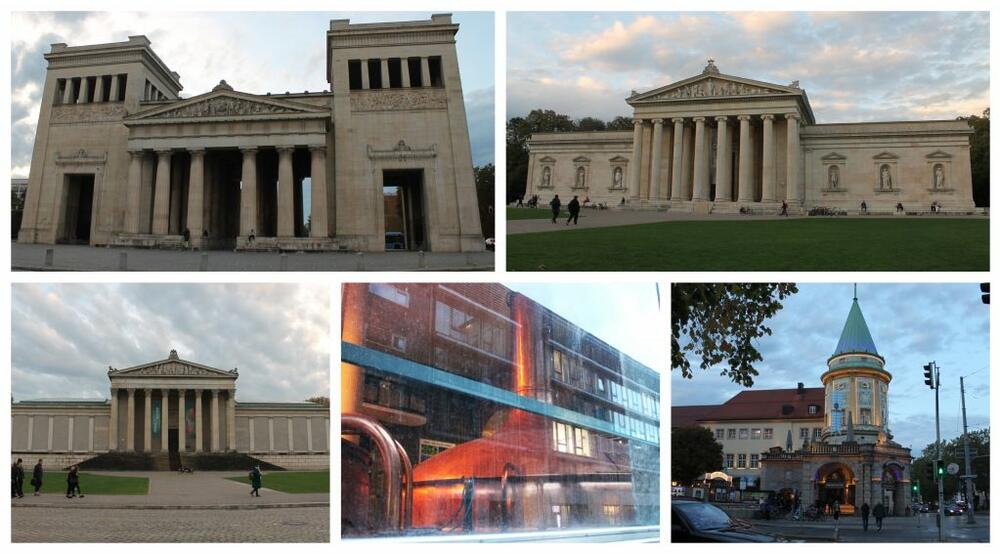
Munich is a city of cyclists. It didn't take us long to figure that out. At every step of the cycle path and many, many cyclists. What a variety of bicycles: with and without a basket, with a trailer, various accessories. Children are being driven, things are being transported and most of the time it's flying. I guess whoever is in charge dictates the situation and imposes his own rules. Motorists here, cyclists in Munich. I asked Robin and Ana how come accidents don't happen. Well… they happen.
When we finally returned to the apartment, we couldn't brag about the number of kilometers traveled because we are at war with most applications, but when I showed them the photos, Ana was amazed: "Well, you have traveled more than I told you." "Well, there..." - we said modestly. A new plan followed tomorrow after breakfast – an attack on the new parks. If we had free time for some other things on the first day, the second day could easily be called "Day of Parks".
We started the tour from the Nymphenburg complex. The castle, the park behind it and the canal leading to it bear the same name. We started from the top of the canal where there is an unusual building with a sculpture of a deer inside. A lot of fish swim in the channel, and swans, ducks and other birds swim next to them. Autumn has already started, so the tree line next to the canal was ideal for taking photos. We visited the castle only from the outside. We only stopped by the souvenir shop for some small items. Behind the castle is a beautiful park. Everything would have been finished if it hadn't been disturbed by moles that didn't care at all about the perfection of the green park area. I was amazed by the size of the fish and the friendly coexistence of them and the ducks in the park's lake.
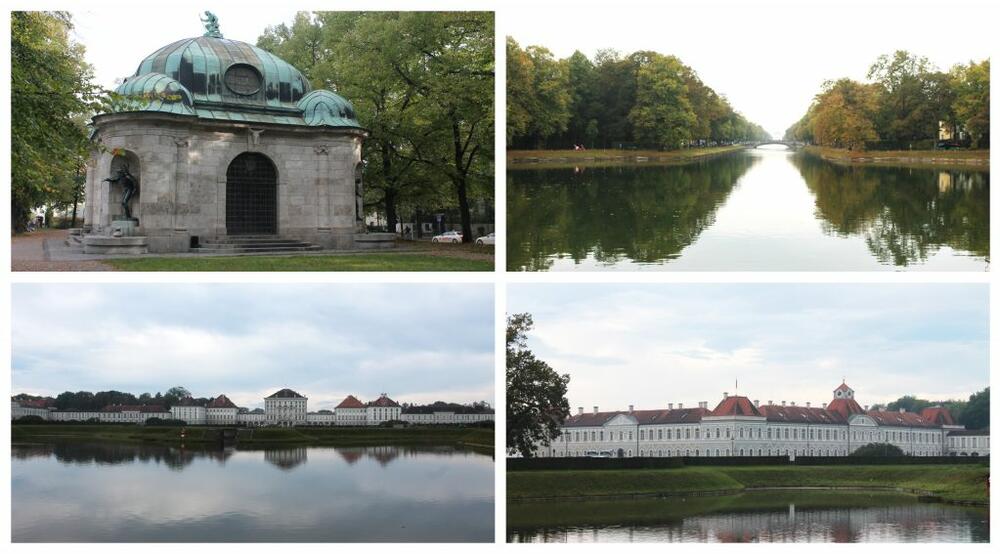

Not far from here is the Deer Park (Hirschgarten). The deer are located in the fenced part of the park, and next to them there is a huge open-air pub that is closed at this time of the year. A few deer walked towards us and then I remembered that I hadn't bought them anything, even though Ana had mentioned carrots. I was really wrong, but I will correct myself next time. Visitors certainly behave as they should once the deer have gained so much trust in humans. We also walked through the rest of this park. In addition to the deer, a self-cleaning toilet left an impression on me. It is certainly expensive, but necessary if you want to save the environment. Children's playground, of course, made of wood. Only the slide, for practical reasons, was not made of natural material.
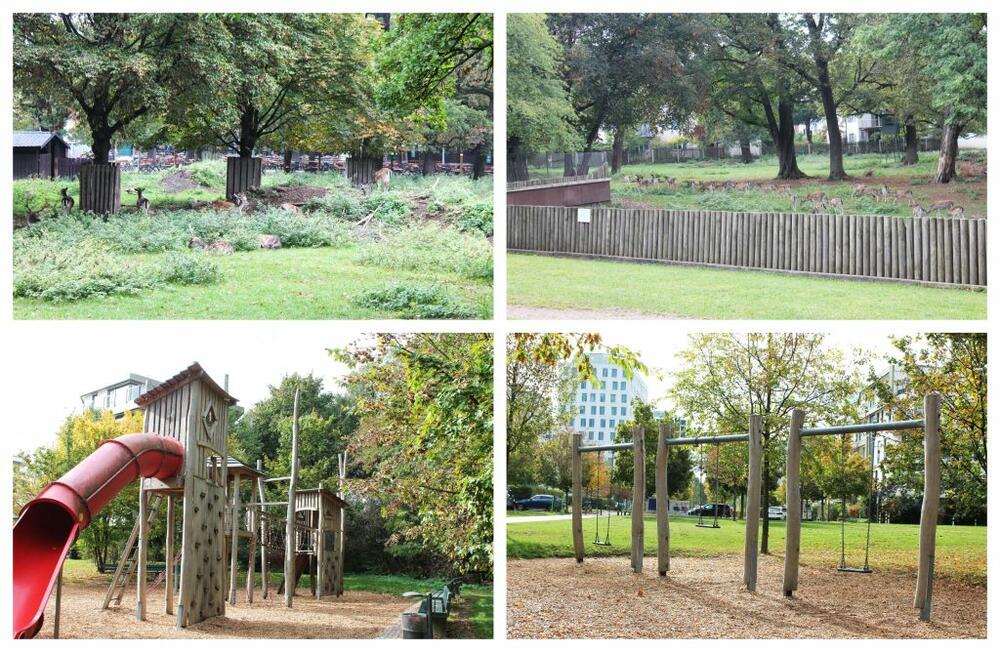
Our next destination was Bavaria, a monumental bronze statue. Next to it is the hall of fame. It is located right next to Theresienwiese, a huge area where Oktoberfest, the most famous beer festival in the world and one of the most important tourist events of this region, has been held since 1810. The festival lasts 16 days, from mid-September to early October. We didn't regret that we passed each other because I neither like beer nor crowds. When we approached the fenced area of 42 ha, we saw that the prefabricated buildings used during the festival were being dismantled. It's a huge job and I was surprised that they don't stand there all the time, but Ana told me that many different events are held here during the year, so the furniture is adapted to each of them.

When I mentioned that we were continuing to the next park on foot, I must admit that there was some resistance from my faithful companion. Then I pulled the joker out of my sleeve: "Robin said that there is a good cafe-restaurant by the lake with excellent food." And so we headed for the Westpark with Duško's threat that it was the last "of this order" for me. And the park... a dream. A full 72 hectares of land. Do not doubt, there was also a pond. In it, the trees look as if you are looking at the canvas of a good landscape painter in front of you. I probably took the most photos here. It amazes me that no park is like the last. You can recognize each one in the blink of an eye. During our walk through the West Park, we very often passed by walkers who spoke some of the ex-Yu languages, so we concluded that this is the part of the city where there are the most "ours". Whichever The park has plenty of grassy areas ideal for children. Flying kites hasn't gone out of style here. In the second part, following the instructions, we came to unusual buildings, Thai and Chinese pagodas, which, although they do not belong here, managed to fit in nicely.

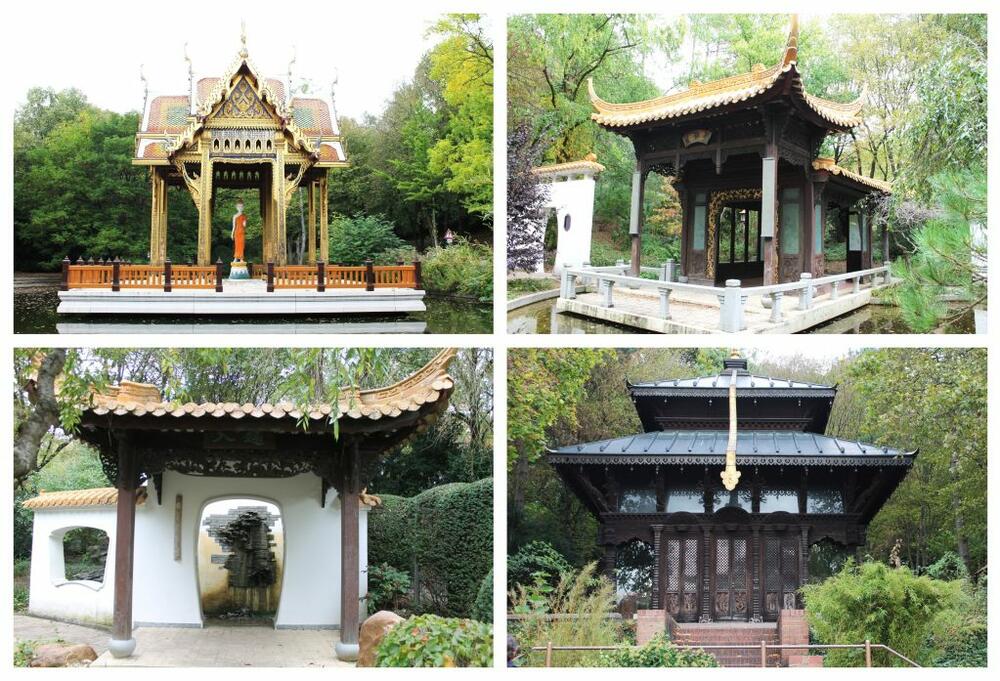
At noon, we finally left the parks and headed downtown. We had a little time before meeting our hosts who wanted to take us to a special place for dinner. We passed through Sendlinger Tor, one of the three remaining Gothic city gates, and entered the pedestrian zone. My neck hurt as I admired the details of the surrounding facades. We happened to notice a sign that the church was being renovated, but it was possible to enter. Without thinking, we took a few steps and were taken aback. Neither a smaller and narrower space, nor greater opulence. I entered numerous religious buildings of all denominations, but this one left a strong but undefined impression on me. I guess she surprised me. On the way out, I paid attention to the name: St. Johann Nepomuk. We also reached Charles Square and the famous Karlstor Gate, which dates back to the 14th century. Not far from it is the extraordinary building of the Palace of Justice. We took a quick look at all of this in the passage, because dinner was waiting for us at the Augustiner restaurant, where on Fridays there is a higher demand for seats, but Robin had an experience of booking seats in advance. The restaurant owners, in addition to good food, also make their own beer. From every beer sold, 10 cents are donated to charity. When we arrived, it wasn't crowded (I guess we got hungry early), but we barely made it to the exit on the way back.
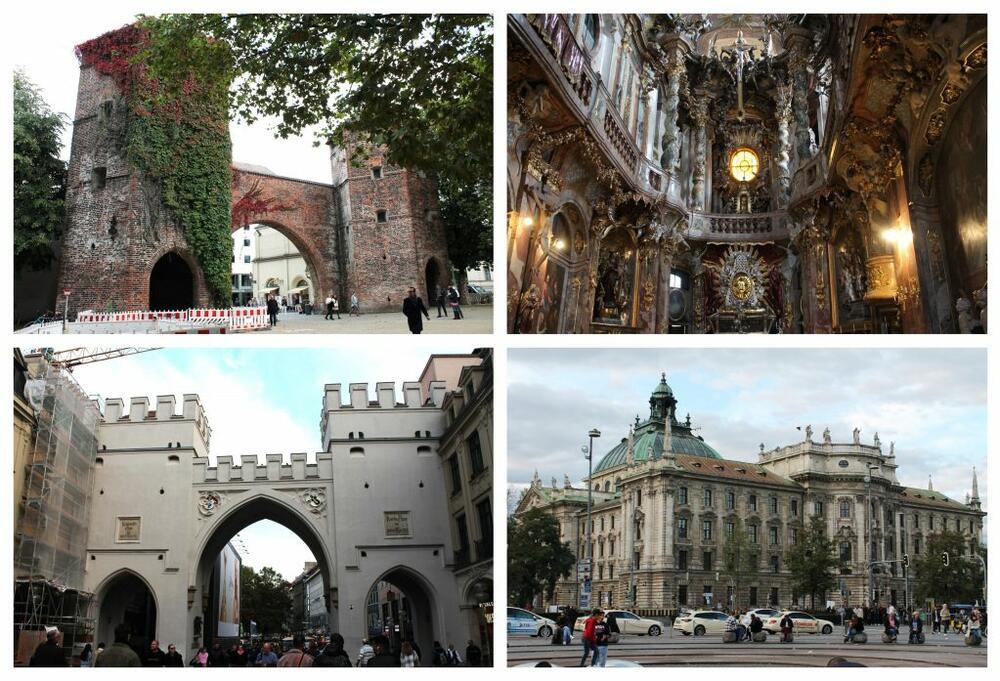
The next day we went to Garmisch-Partenkirchen and took a peek at the Alps, but that's a separate story. Only, on the last day, we had a couple of free hours before leaving for the airport. They discussed what could be seen during that time and I interrupted: "We didn't see the Olympic Park!" It really couldn't be missed. Luckily, he wasn't far away. We were early and got to it by metro. Of course, you have no doubt: there was a pond there too. Next to it is the famous stadium. It can accommodate 70.000 visitors. It has an unusual roof made of acrylic glass. The roof collects rainwater that is used for the lake. I would never have thought that the green hill facing the lake was not natural. However, the hosts told us that it was made from rubble collected in the city after the end of the Second World War. There is also an aquarium here, but we didn't have time for it, nor for the panoramic view from the 290-meter-high tower. The Olympic Park was built in 1972, on the occasion of the Olympics being held in this city. The former Olympic village is still in operation, which is remembered in black chronicles because 11 athletes and coaches from Israel were killed in a terrorist attack during the Olympics.
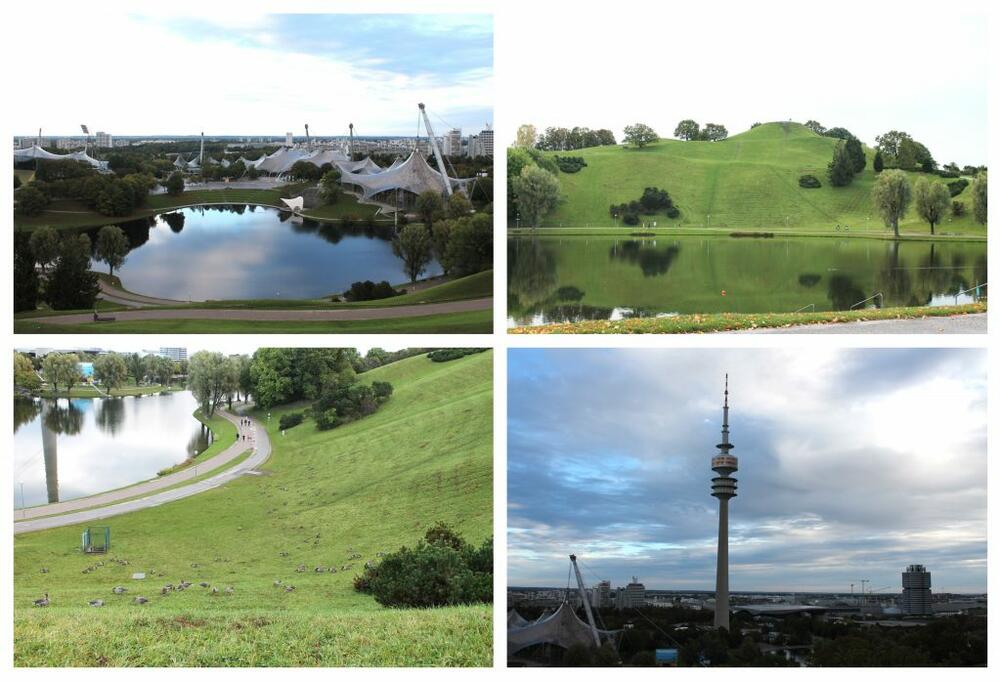
And so we said goodbye to Munich with the intention and desire to return again. There is a lot left to see. I'm sure that other bloggers who write about travel title their articles about Munich: City of museums, City of palaces, City of squares, City of pinakothek, City of pubs... No one would be wrong. It all depends on what is the priority of whom. What will I do when I love nature the most?
Bonus video:



